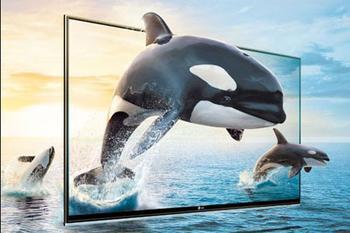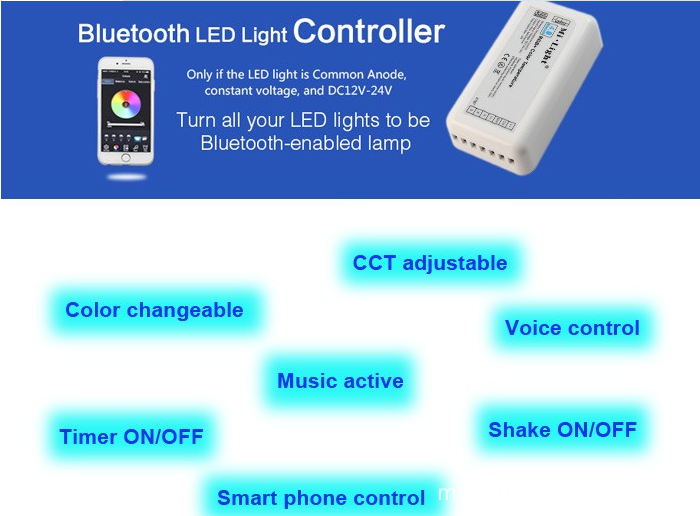 In 2013, the domestic color TV industry experienced a “roller coaster†ups and downs, which was mainly due to the withdrawal of the obvious energy saving subsidy policy for domestic demand. The withdrawal of this policy has continued to affect the entire color TV industry. Due to the high base of shipments stimulated by energy subsidies during the fourth quarter of last year, the shipments of the entire color TV industry did not reach the same level until November. Domestic shipments of brands such as Skyworth began to recover positive growth in single digits, but the overall decline in the industry has provided opportunities for switching the product structure of the color TV industry from entry-level to mid-to-high-end.
In 2013, the domestic color TV industry experienced a “roller coaster†ups and downs, which was mainly due to the withdrawal of the obvious energy saving subsidy policy for domestic demand. The withdrawal of this policy has continued to affect the entire color TV industry. Due to the high base of shipments stimulated by energy subsidies during the fourth quarter of last year, the shipments of the entire color TV industry did not reach the same level until November. Domestic shipments of brands such as Skyworth began to recover positive growth in single digits, but the overall decline in the industry has provided opportunities for switching the product structure of the color TV industry from entry-level to mid-to-high-end. Color TV pattern "catfish" effect
On the last day of 2013, the Skyworth Group, the leading company in the domestic color TV industry, released the first domestic 4K home Internet TV in Shanghai - Kukai Kai U1. Just 3 months after the joint release of Ali Cool TV, they have already created a good one on the 11th day. Skyworth's record of Skyworth will extend the home Internet TV warfare from the previous price war to a fast-upgrading technology war.
At the media communication meeting that day, Liu Weizhi, the vice president of Skyworth Group, told the author: “2014 will be the popularity of domestic 4K TVs, and it will also be the first year of OLED TVs that represent the future direction of technology.†Obviously, in its eyes, Xiaomi, LeTV, etc. The cross-border challenges of enterprises are not hot topics in the color TV industry in 2014. In 2013, the low-cost competition in the smart TV industry seems to have reached an inflection point.
Some experts believe that although Xiaomi and LeTV began to form a wave of disruption in the traditional TV industry in the second half of 2013, the “subversive†in these industries did not change the color TV industry. pattern.
Looking back at the domestic color TV market in 2013, in fact, there was only one reason that the color TV giants actually fell into shipment recession from June, which was the impact of the withdrawal of energy-saving subsidies policy. Until October 2012, the domestic color TV industry shipments still appeared. 11% year-on-year decline, but in the cold weather of the industry shipments, Skyworth and other local color TV industry took the opportunity to complete the switch to the high-end product structure.
With the promotion of Skyworth, TCL and other local color TV giants, the sales of large-size 4K ultra-high-definition TVs, cloud smart TVs and other emerging technology products have increased substantially, while shipments of 32-inch LED TVs, which accounted for shipments in the past, have been shipping. However, the volume has dropped sharply. In this process, the brand pattern of domestic LCD TVs has re-differentiated in the mid- to high-end market. It is clear that the technology that actually leads the change in the color TV industry is still technology, not from the impact of the Internet industry.
Skyworth and other local color TV giants not only completed the omni-channel layout in 20 years, but also their increasingly sophisticated manufacturing processes based on industrial spirit, and the brand awareness and reputation on this basis have become a threshold. This is also the reason for many Internet and IT giants who tried to enter this field after many years of trying to enter the field. The same reason, in 2013, LeTV and Xiaomi encountered difficulties in the test of smart TV.
LeTV and Xiaomi hit the domestic color TV industry with the lowest cost model of Internet direct sales. Skyworth and TCL and other traditional color TV giants also have their own strategies. Skyworth's cross-border cooperation with Ali, TCL and Baidu’s iQIYI also uses the Internet as the The carrier launches defensive products. The pattern of the color TV industry has not changed, and Skyworth's domestic market shipments have exceeded 10 million units.
However, for LeTV and other foreign competitors, the giants of the color TV industry were even grateful. Yang Dongwen once told the author: “It is the Internet company’s success that has increased the attention of the industry and the color TV industry is now reverting to the sunrise industry. Internet companies have also brought new marketing thinking and business models to the color TV industry."
Extensive price war or return to rationality
The ups and downs of the Chinese color TV market in 2013 brought great pressure on the industry. The core operating indicators of most brands, such as gross profit margins, have fallen significantly. This is mainly related to the continuous decline in the prices of LCD TVs. After the energy-saving subsidies are withdrawn, shipments will not drop sharply. From June onwards, the prices of LCD TVs, especially 40-inch, 42-inch, and even 50-inch LCD TVs, have continued to decline.
Luo Qingqi, a senior director of Pare Consultation, pointed out: “In 2014, entry-level smart TVs have been less likely to have room for price drop. This is also the reason why Xiaomi’s smart TVs only hear the stairs, because they have already lost the price as challengers. The obvious advantage, on the contrary, is that the original color TV giants have relied on the share of the 3rd and 4th and rural markets, as well as the advantages of high-end products to obtain a good profit, which is enough to support its entry-level smart TV to build a firewall.â€
From this point of view, the competition in the color TV industry in 2014 will remain focused on the competition between Chinese and foreign color TV manufacturers, and the price war will also be upgraded from entry-level products to mid-to-high-end product markets.
Liu Yaoping, general manager of Skyworth China Marketing Center, said: “In 2014 China's color TV market price competition will return to a rational value war, the competition between the main TV manufacturers should be the competition of technology and high-end areas, in the popularization of 4K TV The Chinese who promoted the fastest will succeed, and whoever takes the lead in the OLED TV field will also have a first-mover advantage."
According to a research report from a third-party research company, in January 2013, 32-inch LED LCD TVs with an average unit price of only 1,500 yuan were still the largest proportion of the shipments of color TV giants, and 4K TV was the most optimistic organization at the time. It is predicted that shipments will not exceed 1 million units throughout the year. However, with the withdrawal of energy-saving subsidies, shipments of 32-inch entry-level LCD TVs continue to decline. On the contrary, the share of 4K ultra-high-definition televisions, 3D and cloud smart TVs is fast. Ascending, which accounted for 25.3% of domestic 3D TV shipments, Skyworth’s 4K TV accounted for 9% in November this year, and its industry share exceeded 40%. Not all of this technology upgrading and product structure upgrading is evident. The color TV giants can all become winners, and only those enterprises that grasp the technical trends accurately, respond fast, and invest decisive resources can grasp such opportunities.
Although the home Internet is also a direction that the technology upgrade of the color TV industry must take, the display technology upgrade itself is still the most important factor driving the growth of the entire color TV industry. The research report from the market research institution Displaysearch shows that although the global LCD TV panel shipments The volume has only increased by 2%, but LCD TVs are rapidly increasing in size and resolution. This year, shipments of 50-inch LCD TVs and above are expected to reach 28 million units (19 million last year). This includes 3 million 4K×2K TV panels.
Based on this industry development trend, leading brands in the Chinese market such as Skyworth have made the popularity of 4K TV the top priority for 2014. According to Skyworth Digital's plans, its 4K TV sales accounted for about 10% of current sales in 2014. Rising to 60%, this is faster than previous Skyworth's pace of replacing 2D with 3D.
At the same time, Skyworth, as the first domestic company to introduce OLED TVs and layout on OLEDs upstream, will also be 2014 as the first year for the development of OLED TVs instead of LCD TVs. Data from Displaysearch shows that the yield rate of large-screen OLED panels has increased from 9% at the beginning of the year. Up to now, about 40%, this will hopefully drive down the price of OLED TVs and boost its share.
The RGB Color Controller is in a predetermined order to change the main circuit or control circuit wiring and circuit changes the resistance value to control the motor start, speed, braking and reverse master device to control RGB color.

Cumbersome, complex structure, once the design is complete, you can not modify or expand, but it's fast. Micro-controller design program easy, simple structure, convenient to modify or expand, modify a machine instruction function, simply restated the corresponding micro-program;
To add a machine instruction, just add some micro-control program in memory, however, RGB Color Controller is through the implementation of a micro program.

Specific comparison is as follows: a combination of hardwired logic controller, also known as the controller, by the logic circuit, relies entirely on hardware to achieve the function of the instruction.
Basic components to RGB Color Controller:
(1) the instruction register is used to store instruction being executed.
(2) Operation code decoder: instruction opcodes for decoding to produce the corresponding control level, to complete the analysis function of the instruction.
(3) Sequential Circuits: used to generate a time stamp signal.
Mingxue Optoelectronics Co.,Ltd. has apply the I S O 9 0 0 1: 2 0 0 8 international quality management system certificate, For RGB Color Controller we apply the CE, RoHS and SAA certificate for our led lighting product.
Our R & D team can handle highly customized designs and offer OEM and ODM services.
We hope to set up a long-term partnership with you through our high quality products and our Sincere Service!


RGB Color Controller
Rgb Color Controller,Color Rgb Led Controller,Colorful Rgb Led Touch Controller,Mini Rgb Color Controller
Shenzhen Mingxue Optoelectronics CO.,Ltd , https://www.led-lamp-china.com
